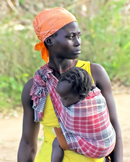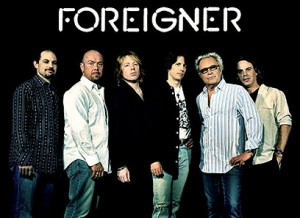Supermodel vows to stay naked till USAID funds reach starving children
Supermodel Miranda Kerr posed nude on the cover of Rolling Stone, announcing she would not put her clothes back on until USAID funds reached starving children affected by the drought in East Africa. She criticized USAID for tying aid to purchases from American farmers and shipping companies, leading to delays of many months in food reaching famine victims, causing thousands of premature deaths. Oh, we can only dream. Sorry, this post is fake. The cover is genuine, but Miranda Kerr was actually trying to save the koala bear and said nothing about staying naked, USAID, aid tying, or the drought. I am experimenting with this (fake) blog post /Tweet to see what would work on blogs and Twitter to promote the Aid Watch motto, “just asking that aid benefit the poor.” Based on my Twitter experience, the main ingredients behind how much Tweets “succeed” in the philanthropy area seems to be some combination of two or more of the following: (1) Sex, (2) Celebrities, (3) Outrage (moral), (4) Suffering Africans, and (5) Satire (lame attempt to come up with memorable acronym for (1) thru (6): SCOSAS).
One inspiration for this search for success was Chris Blattman’s hilarious spoof of a UN sex guide, which I tweeted and retweeted over and over again this weekend. It became the biggest hit that I’ve ever tweeted on Twitter. This only featured sex and satire (of the UN), but Chris was so comic that was more than enough. Another big hit in my Twitter career of 3 months was tweeting a post by Alanna Shaikh protesting an AIDS advocacy ad that portrayed the naked female body as the home for the disease.
The biggest hits among tweets of Aid Watch posts: (1) Beyonce’s Secret for Greater Aid Effectiveness, (2) Satire on how to make an Advocacy Video about Africa, (3) Should starving people be tourist attractions? (4) "Didn't we try that in 1938? Why technical poverty fixes fall short?", (5) The tragedy of the Millennium Development Goals, (6) UN Human Rights and Wrongs. It’s based on this record that I came up with the SCOSAS list for Twitter success above.
Of course, it also helps to contrast with what was NOT successful. There was an anemic response to my tweets on NTYT column on getting out of Afghanistan, and Marginal Revolution on how African infant mortality and illiteracy look good in historical perspective. Tweets also fell flat on Aid Watch posts on (1) USAID funding Iraqi insurgents (2) MCC’s admirable openness to their critics, (3) mission creep at the IMF, (4) corruption killing USAID projects in Afghanistan. The Aid Watch post on aid tying appeared before I started Twitter, but also generated a fairly modest response. It’s striking how serious and important these posts are compared to the successful ones on Twitter. Outrage by itself (1) and (4) does not seem to be enough. (We also may have just done a bad job presenting the issues on these posts.) Of course, the successful tweets also covered serious issues, but needed extra SCOSAS pizzazz.
I can understand why my critics at Bill Easterly Watch (!?) justify relying on Angelina Jolie as aid spokeswoman, since she combines all the successful elements. But my big worry at Aid Watch is that relying on shallow sexy celebs to promote aid leads to a shallow aid message: just spend more aid dollars with no incentives for dollars to reach the poor.
Is there some way to grab attention for good causes without selling out to our society's worship of celebrity & sex?
 From Aid to Equality
From Aid to Equality






 The long and remarkable reign of the celebrities in foreign aid shows no sign of abating. On a May 1 CNN special on TIME magazine’s new selection of the world’s 100 most influential people, according to a press release, “George Clooney — a four-time honoree — will sit down with U2 frontman and activist Bono to chat about fame and politics.”
The long and remarkable reign of the celebrities in foreign aid shows no sign of abating. On a May 1 CNN special on TIME magazine’s new selection of the world’s 100 most influential people, according to a press release, “George Clooney — a four-time honoree — will sit down with U2 frontman and activist Bono to chat about fame and politics.” I was curious about what the going rate is these days for attracting customers who want to save Africa. Five cents was a little lower than I expected.
I was curious about what the going rate is these days for attracting customers who want to save Africa. Five cents was a little lower than I expected. Not sure what to make of this, so I just state the facts: an African-American record producer arranged to have well-known African singers do U2 songs for this album. U2 obviously had to sign off on an album in which Africa thanks U2 with U2 songs, due to copyright laws, and in fact the producer thanks U2 band members.
Not sure what to make of this, so I just state the facts: an African-American record producer arranged to have well-known African singers do U2 songs for this album. U2 obviously had to sign off on an album in which Africa thanks U2 with U2 songs, due to copyright laws, and in fact the producer thanks U2 band members.